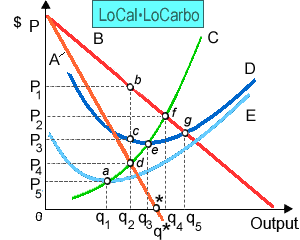If LoCalLoCarbo produces the profit-maximizing quantity and charges the profit-maximizing price, in that case its total revenue equals the area of the rectangle as: (i) 0P2fq4. (ii) bdP4P1. (iii) 0P4dq2. (iv) bcP3P1. (v) 0P1bq2.

Hello guys I want your advice. Please recommend some views for above Economics problems.